'Murder hornet' nest leads to discovery of 180 adults, 1,500 larvae
This is a killer invasive species in the U.S.
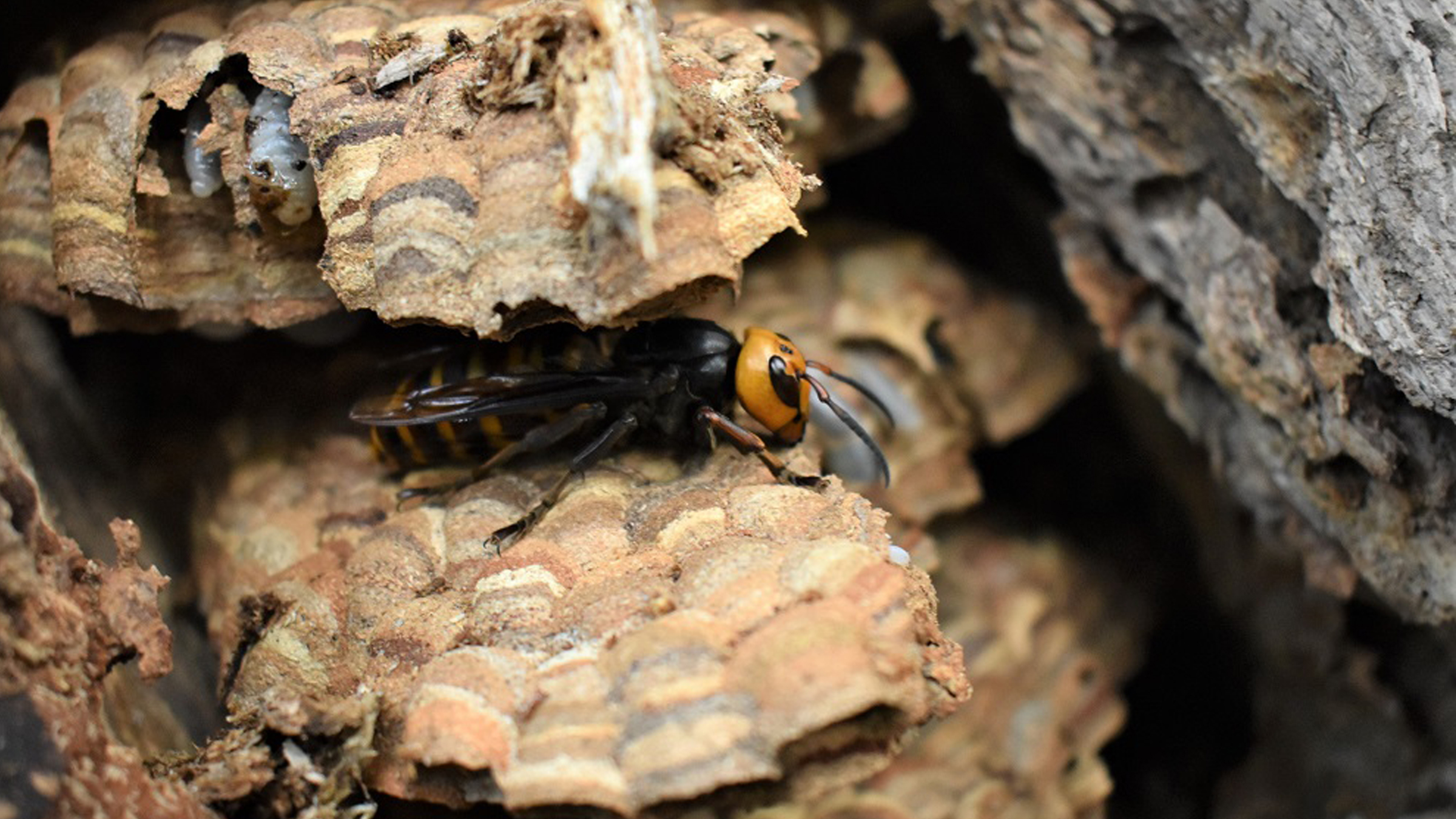
There's one less "murder hornet" nest in the world, now that workers with the Washington State Department of Agriculture (WSDA) have used a vacuum and cutting tools to suction up the invasive species and dispose of their home this week.
This is the first discovery of an Asian giant hornet (Vespa mandarinia) nest in Washington state this year, and the WSDA asked locals to continue to report suspected giant hornets and their nests to the agency.
"While we are glad to have found and eradicated this nest so early in the season, this detection proves how important public reporting continues to be," Sven Spichiger, WSDA managing entomologist, said in a statement. "We expect there are more nests out there and, like this one, we hope to find them before they can produce new queens."
Related: Photos: Murder hornets will haunt your nightmares
Entomologists found the nest at the base of a dead alder tree, east of the city of Blaine in rural Whatcom County. It's a familiar region to the WSDA; in October 2020, they found another Asian giant hornet nest just 2 miles (3.2 kilometers) away, and on Aug. 11 of this year, they received news of a live Asian giant hornet just 0.25 miles (0.4 km) away. The spot is just south of the U.S.-Canadian border.
Upon finding the nest, WSDA staff suited up to avoid being stung and then vacuumed up 113 worker hornets from the nest. The team also caught 67 additional murder hornets in the area with the stealthy use of nets. Meanwhile, the crew removed bark and wood from the decayed alder tree, which revealed a nightmare inside — a nest with 1,500 developing hornets that hadn't yet reached adulthood. The nest had nine layers of comb.
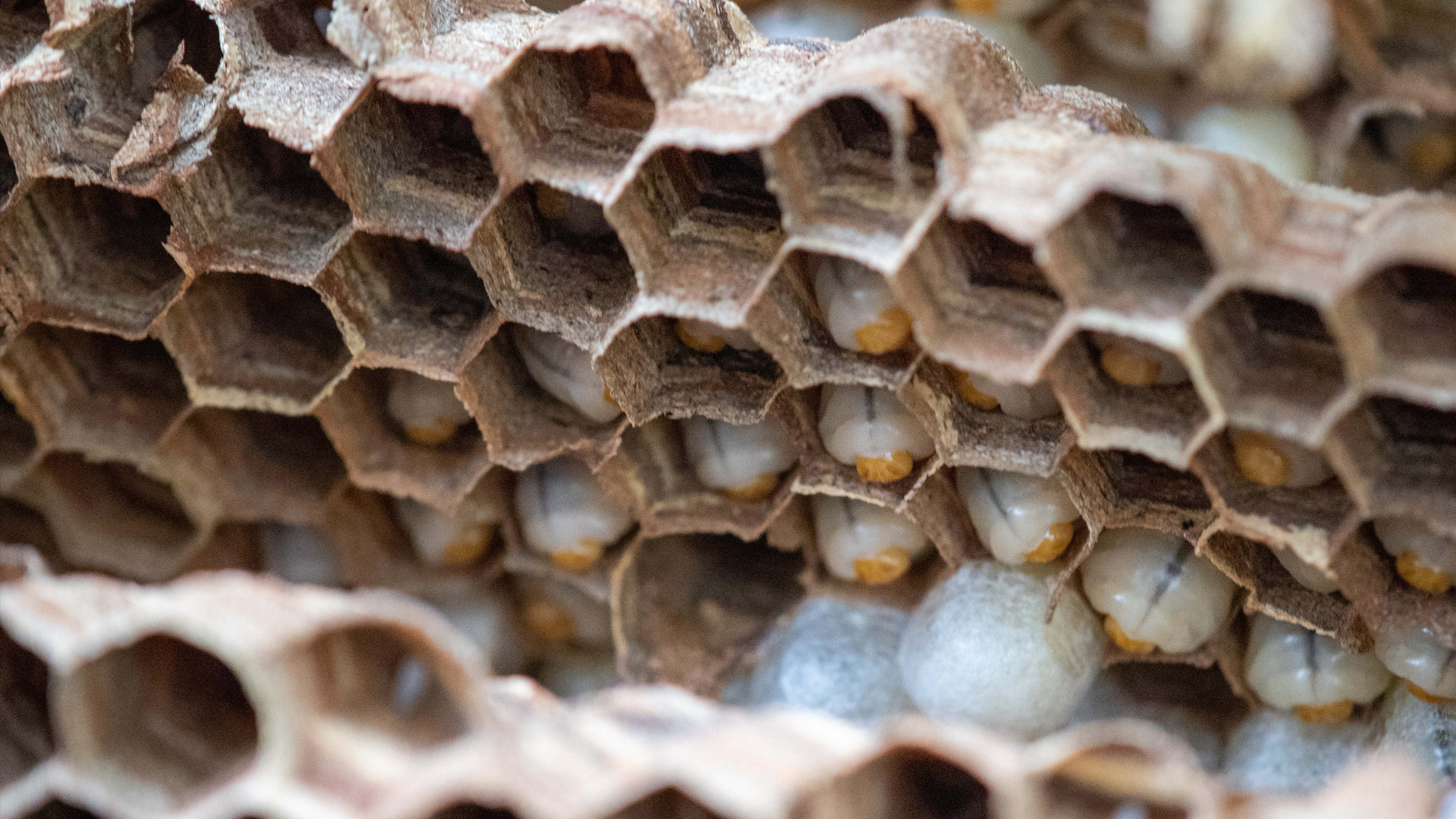
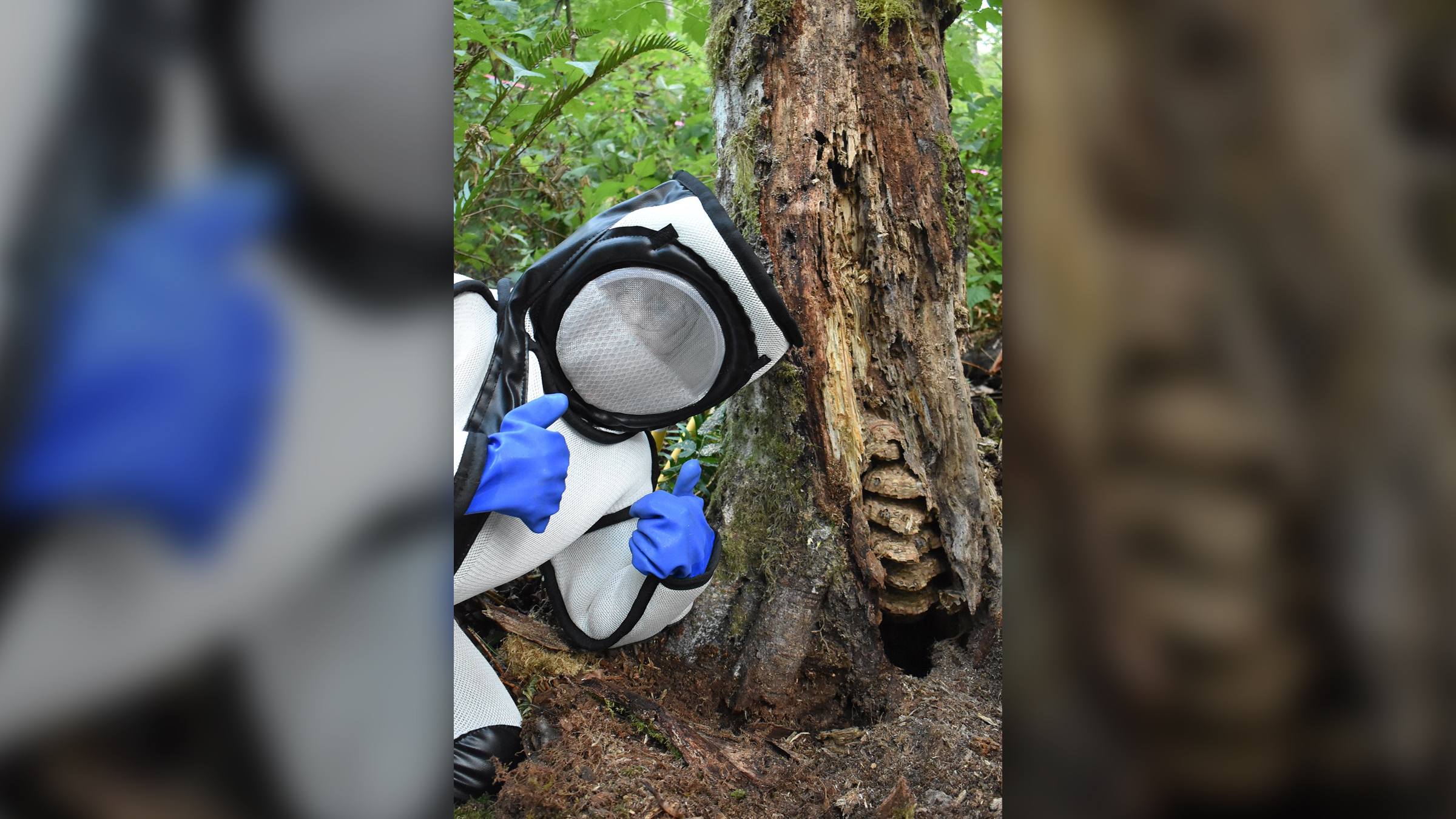
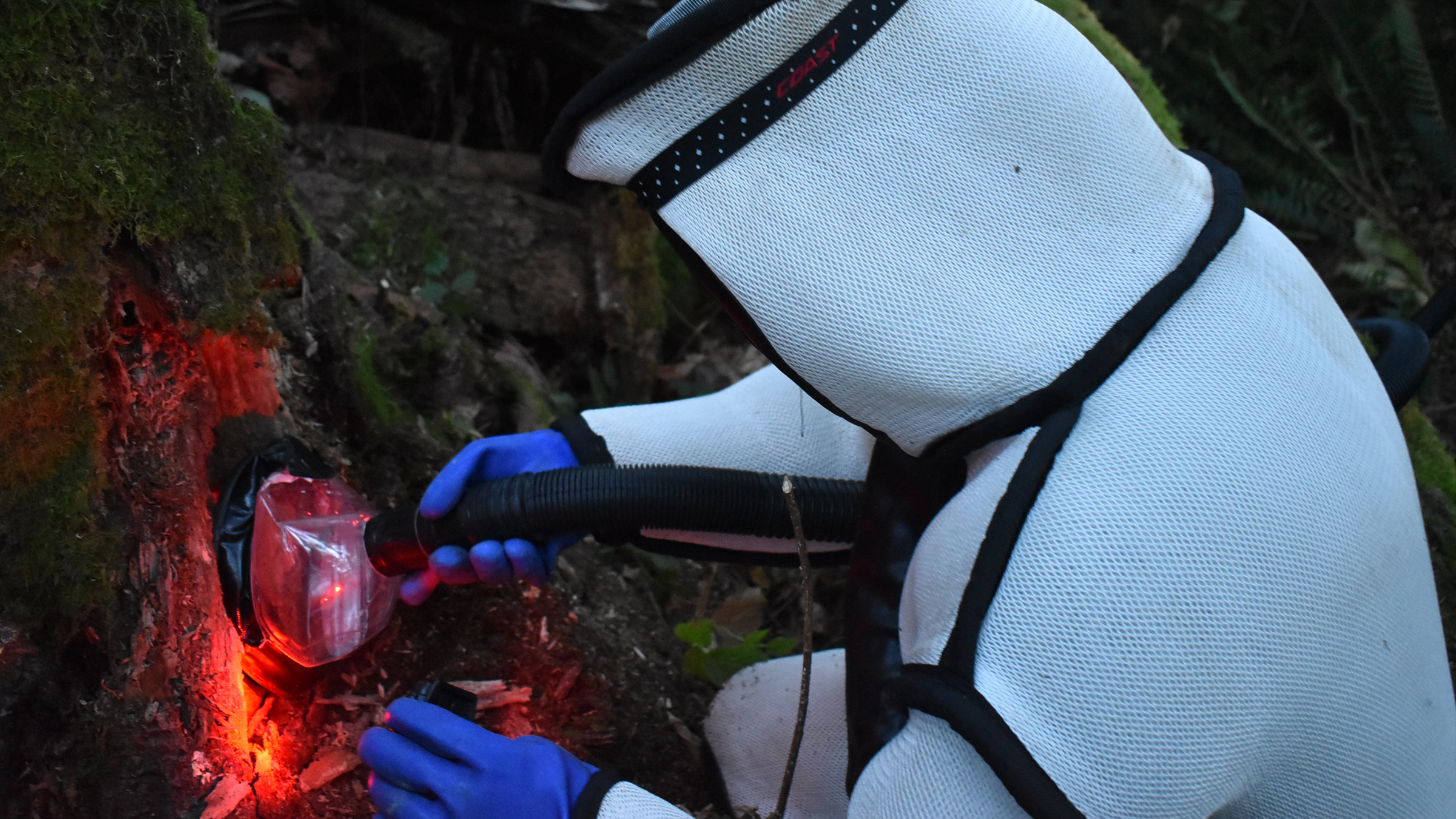
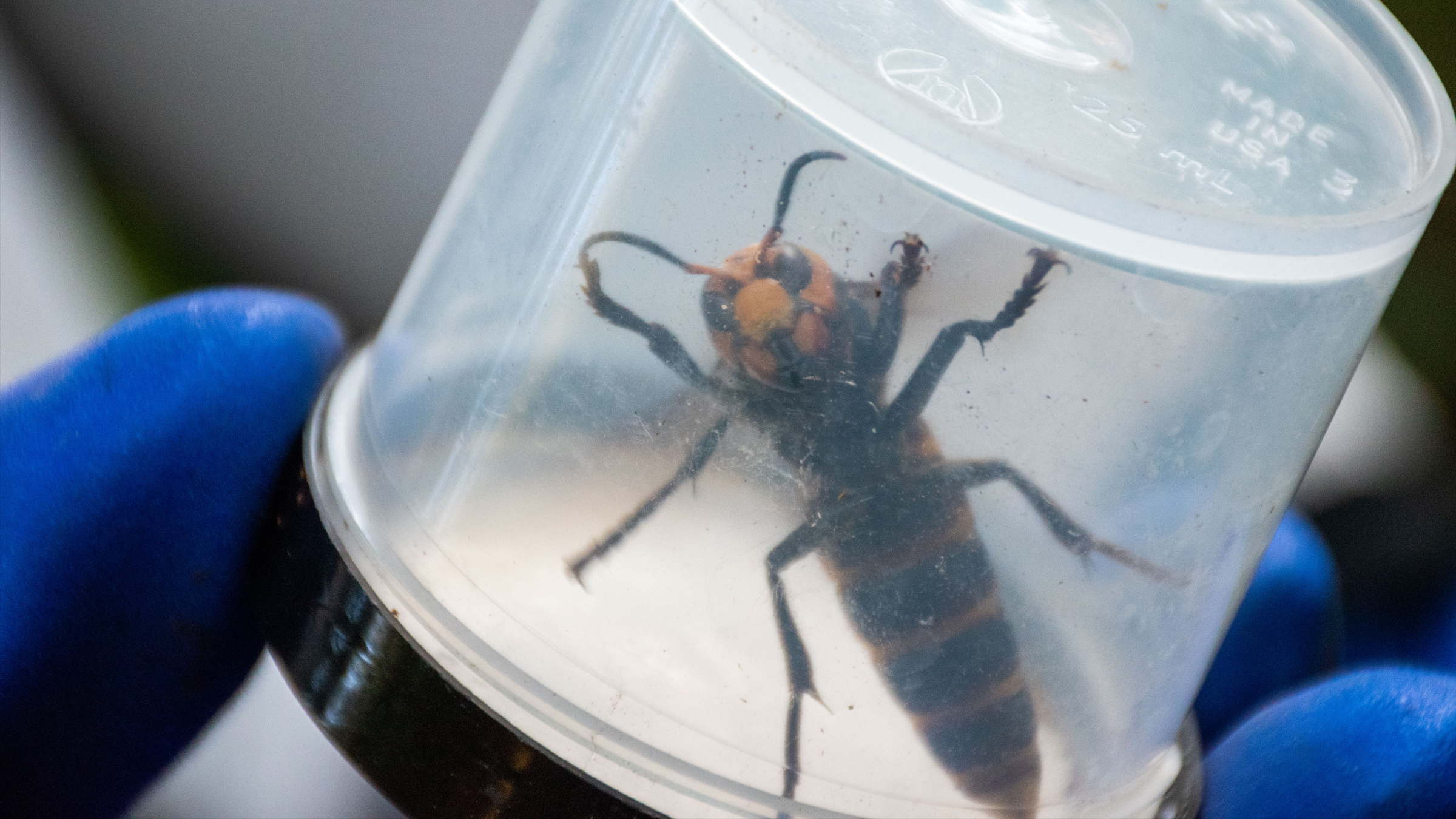
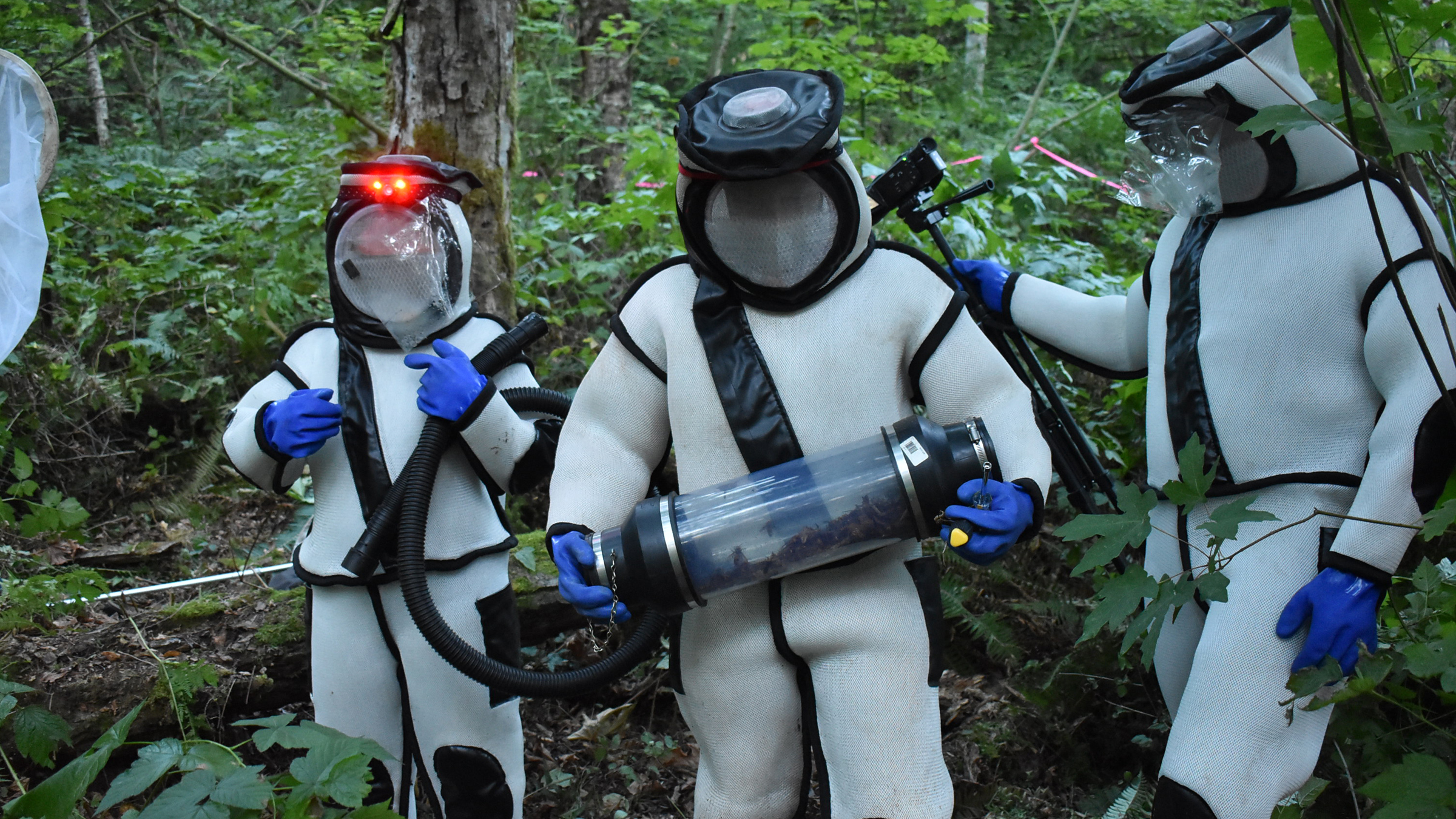
WSDA workers removed a part of the tree and the nest so that it could be studied at Washington State University Extension in Bellingham, which is also located in Whatcom County.
Sign up for the Live Science daily newsletter now
Get the world’s most fascinating discoveries delivered straight to your inbox.
Asian giant hornets flew into public view in 2019, when they were first detected in the United States in Whatcom County. At about 2 inches (5 centimeters) long, they're the largest hornet in the world. Although native to eastern and Southeast Asia, they likely came over to the U.S. as "unwitting hitchhikers" via a traveler or shipping container, CBS news reported.
Only females have stingers, but these social wasps often kill their beetle and honey bee prey another way: by ripping them to pieces. "They can conduct mass attacks on honey bee hives, destroying the hive in a matter of hours," according to the WSDA statement.
Murder hornets stings can kill people. In Japan, about 40 people die from murder hornet stings each year, a 2007 study in the journal Clinical Toxicology found. These deaths are often attributed to kidney failure, anaphylactic shock, heart attacks and multiple organ failure from repeated stinging, the study reported.
The WSDA will continue to set traps for Asian giant hornets through the end of the season in November. If you live in Washington state and suspect that you found a murder hornet, take a photo of it, if possible, and visit https://agr.wa.gov/hornets to report it.
Editor's note: This article was updated at 3:36 p.m. EDT Aug. 28 to clarify that all females, not just the queen, have stingers. The males do not have a stinger, according to Animal Diversity Web.
Originally published on Live Science.

Laura is the archaeology and Life's Little Mysteries editor at Live Science. She also reports on general science, including paleontology. Her work has appeared in The New York Times, Scholastic, Popular Science and Spectrum, a site on autism research. She has won multiple awards from the Society of Professional Journalists and the Washington Newspaper Publishers Association for her reporting at a weekly newspaper near Seattle. Laura holds a bachelor's degree in English literature and psychology from Washington University in St. Louis and a master's degree in science writing from NYU.










